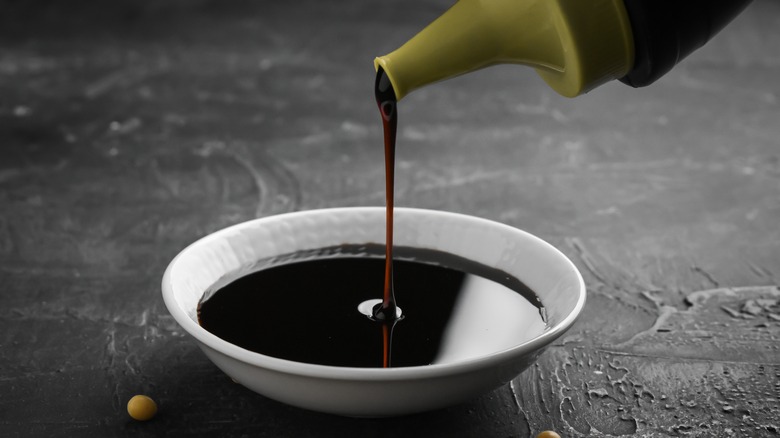What's The Difference Between Light And Dark Soy Sauce?
If you've only ever bought the standard bottle of Kikkoman then you probably don't know much about the wider world of soy sauce. Soy sauce is a condiment from China that is well-loved for its ability to add rich, savory notes to everything from teriyaki chicken to chili. Most people think of soy sauce as being a monolithic seasoning, but it really only shows one expression of the many soy sauce varieties that are available.lemon
According to America's Test Kitchen, the two soy sauces that are most worth noting are light and dark soy sauce. They have a similar flavor palate, but with a few small differences that make them better suited for different dishes. Light soy sauce is a thin, dark amber version of the condiment that is used generally to add savory soy flavors to foods. It usually has a light sweetness and acidity to it, though it is often also saltier than dark soy sauce. This style is more common in Chinese cooking. If a Chinese recipe calls for "soy sauce" without differentiating the two, it's likely calling for a light soy sauce.
Dark soy sauce is darker and often tastes sweeter due to the addition of sugar or caramel. It's typically used sparingly or as a finishing ingredient because of its ability to overpower other flavors. This style is more commonly used in Japan. Because of its higher viscosity and darker color, it also tends to stain foods with a darker hue.
Is low sodium the same as light?
If you're looking for low-sodium soy sauce, then you are looking for a different variety entirely. Low sodium soy sauce is any style of condiment that has had up to 40% of the salt removed from it after the brewing process has finished. It's often still trying to replicate the flavors of a darker soy sauce, just with much of the sodium removed. Some brands may use the term "light" or "lite" to refer to their low-sodium versions, but these are not the same as light soy sauce.
Light soy sauce does typically feature less sodium than its darker counterpart though (2). Despite this, most light varieties are considered to taste saltier than dark soy sauce. This is because dark sauces tend to have more sugar in their ingredients as well. That sweetness helps to balance out the additional salt and mask its flavors.
If you're looking for a genuinely low-sodium version of soy sauce, then it might take some digging to ensure that your favorite style of light soy sauce truly features reduced salt content. If you're someone who just loves the salty flavor of soy sauce though, you can opt for a light version that will still feature less salt without sacrificing flavor.
When to use each style
It might seem redundant to keep two bottles of soy sauce in the pantry, but both of these variants are worth keeping on hand. Not only do they have different uses, but combining the two can help create a perfect balance of flavors to many dishes.
Dark soy sauces are most often used to add color and flavor to dishes. A small splash of dark soy sauce is more than enough to add a dark, caramelized color to lo mein noodles. It's also added late in cooking dishes like stews and slow braises. Not only does it add a concentrated, wine-like complexity to these foods, but if it's cooked for too long it can overly darken sauces.
Light soy sauces are more often relied on for adding soy sauce flavors without altering color. It's also preferred for dipping sauces for foods like dumplings because of its lighter flavor. Dark soy sauce tends to be overpowering for some ingredients, but light sauces provide more of a balanced nuance instead.
The two also work great together to add rich color, complex flavors, and savory richness to a wide variety of foods. Binging with Babish uses the combo of both to season a batch of easy scallion noodles.


